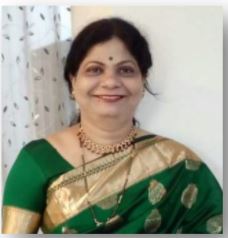Explaining Reality: Odia Parallel Films
DOI:
https://doi.org/10.53957/sanshodhan/2019/v8i1/142814Keywords:
No keywordsAbstract
No Abstract.Downloads
Metrics
Downloads
Published
How to Cite
Issue
Section
References
A s h i s h R a j a d h y a k s h a , “ T h e 'Bollywoodization' of the Indian Cinema: Cultural Nationalism in a Global Arenaâ€, in Inter-Asia Cultural Studies, Volume 4, 2003 - Issue 1, 2010, pp.25-39.
Shyam Benegal, “'Communications and Culture: Tradition, Modernity and Postmodernism in Indian Cinemaâ€, The 4th Subhas Ghosal Foundation Lecture Address, agencyfaqs!, 08 September, 2005.
Indian cinema, mostly Hindi mix genres in one work like freely mix action, comedy, romance, and drama ormelodrama. They also tend to be musicals that include songs filmed in picturesque locations. The genre is named after the masala, a mixture of spices in Indian cuisine.
Letitia Allemand, “How popular is the Indian alternative movement and how is urban poverty represented?,†India's Parallel Cinema, Project work in Area and Cultural Studies, Academic year 2014201
, Lousanne, pp.5-29.( Auteur theory of filmmaking views the director as the major creative force in a motion picture.It was born in France in the late 1940s) 5. ô€€ See also Ira Bhaskar, The Indian New Wave, Routledge Handbook of Indian Cinemas, 2013.
Bhima Singh, Odia Chalachitrara Itihas (o), Sitaleswari Prakashani, Cuttack, 2010, pp. 320-322.
Directorate of Film Festival, 4 Nov., 2012; Ram Awatar Agnihotri, Modern Indian Films on Rural Background: Social and Political Perspective, 4 Nov., 2012; Bhima Singh, op. cit., p.322.)
Surya Deo, Odia Cinema: Rupa Rupantara (o), Srujana, Bhubaneswar, 2016, p.133.
K. Moti Gokulsing, Wimal Dissanayake (Ed.), Routledge Handbook of Indian Cinemas, Routledge, New York, 2013, p.69.
Surya Deo, Odia Cinema: Rupa Rupantara (o), Srujana, Bhubaneswar, 2016, p.134.
K. Moti Gokulsing, Wimal Dissanayake (Ed.), Routledge Handbook of Indian Cinemas, Routledge, New York, 2013, pp.134-135.
Ajit Duara, “Maya Miriga', in Debonair, June, 1994: Piyush Roy, “Maya Miriga: A Mirage called Lifeâ€, The South Asianist, Vol. 2, No. 3, pp. 173–178.
Nirad Mohapatra, “Absosh Kichhi Nahiâ€, Ravibar Sambad, Bhubaneswar, 22.02.2015;Pranab Das, “Niradanka P r a t h a m a C i n e m a †( o ) , T h e S a m b a d , 1 . 0 3 . 1 9 1 5 ; T h e Sambad,20.02.2015.
K. Moti Gokulsing, Wimal Dissanayake (Ed.), Routledge Handbook of Indian Cinemas, Routledge, New York, 2013, p.70.
Suryo Deo, Odia Cinema Ra Rupa O Rupantara (o), Pakhighara Publication, Bhubaneswar, p.141.
Surya Deo, Odia Cinema; Rupa Rupantara (o), Srujana, Bhubaneswar, 2016, p.142.
39th National Film Awards, International Film Festival of India, 27 Feb 2012; Surya Deo, op. cit., pp.142-143.





 Call for Papers
Call for Papers Indexing/Abstracting
Indexing/Abstracting
